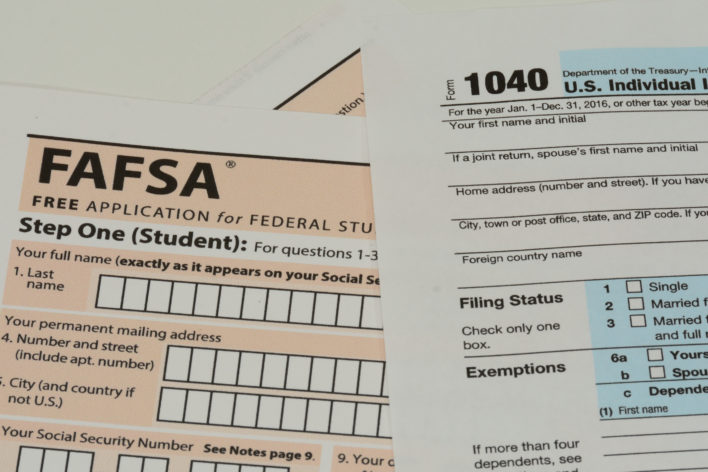FAFSA Changes Coming: Good & Bad

Analysis of Changes Coming for FAFSA
On July 1, 2023, there will be big changes in the way FAFSA operates. These changes result from the passage of the Consolidated Appropriations Act (CAA) 2021, which was passed in December 2020 to expand provisions of the Coronavirus Aid, Relief, and Economic Security (CARES) Act.
While many policy changes were included in the CAA, one of the biggest changes happens to the Free Application for Federal Student Aid (FAFSA), a program used by students each year to determine their eligibility for federal college money. The 2022 FAFSA will first see the following changes.
From “EFC” to “SAI”
The Expected Family Contribution (EFC) is a number used by colleges to determine someone’s eligibility for financial aid. Ambiguity surrounds the term, which could be taken to mean how much money a family can provide, or the amount of aid a student is eligible to receive.
To eliminate that confusion, the term used on 2022’s FAFSA application will be the Student Aid Index (SAI). This term will do nothing except clarify the meaning of the number used by colleges in determining aid. It does not indicate how much aid a family can or will pay towards a student’s college.
A Shorter, Easier Application
Earlier this month, Kiplinger noted that there was cause for concern as “a decrease in the number of families completing the FAFSA”. Furthermore, in a report issued by The National College Attainment Network, there has been a 10% drop in financial aid applications since January 2020. The pandemic is obviously a major factor, but there is speculation that the sheer number of questions on the current FAFSA application has deterred many families from completing it.
The provision of the new bill will eliminate many questions, some of which did not apply to most students applying for financial aid. The result will likely be a reduction in the number of questions from over 100 to just under 40. It will also allow for applicants to transfer their income directly into the FAFSA application instead of manually entering it.
Single Parent Versus Two-Parent Households
As it stands now, either parent in a two-parent household can fill out the FAFSA application for their student. However, when in single parent households, especially those where divorce or separation are a factor, the custodial parent has traditionally been the one filling it out. In the cases where the custodial parent earned less than the non-custodial parent, it benefited the student’s potential eligibility.
However, the new legislation requires the parent who provides the most financial support to complete the FAFSA. Where the support provides is 50/50, the parent with the highest annual income will be required to complete the application.
This provision could result in less financial aid eligibility, especially if there is a significant difference between the both parents’ income.
Multiple Student Discount: GONE
Under the current provisions, families with more than one child in college at the same time receive an increase in financial aid eligibility. This is pertinent for families with multiples (twins. triplets), or those whose children are closely spaced. This was a great benefit.
The new legislation has killed that discount. Starting in 2023, the financial eligibility for these families will be reduced.
Pell Grant Made Easier
The federal government doles out vast sums of financial aid through the Pell Grant because it is the most accessible program to lower income families. In addition to a slight increase in the max amount ($6,345 + $150 = $6,495), the new legislation simplifies eligibility by requiring that families make less that 175% of the federal poverty level. The Pell Grant is usually awarded to those whose annual income is less than $60,000 per year.
Changes to Student Loans
With the CARES Act, interest and payments on federal student loans was waived until the end of January, 2021 – just a few weeks ago. The new CAA legislation did not extend those waivers as many had hoped. The bill is also devoid of any provisions relating to student loan forgiveness. However, employers can still contribute towards the student debt held by their employees, tax-free up to $5,250 until the first day of 2026.
The new administration did eventually extend the waivers until the end of September, 2020.
Summary
The FAFSA will remain a required step in obtaining federal aid. The new bill has certainly disrupted the FAFSA environment, with some portions becoming easier. Although, it remains to be seen if those changes have the impact legislators believe. It can also be argued that the legislation may have complicated other aspects of financial aid that were never a problem.
As more information becomes available, we will report it to you.
(Image courtesy of BDoss928 via Shutterstock)
RELATED:
- FAFSA: What You Need To Know
- Pell Grant: Everything You Need to Know
- Military Spouse’s Guide to Going Back to School
About the author
Lori Waddell serves as Co-director of an emergency response COAD in Montana, a freelance writer, and an Air Force Key Spouse. She is passionate about empowering communities and individuals through knowledge and resources. She currently lives in Montana with her husband and two children.
